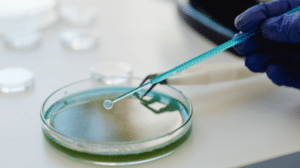
Kan være verdens beste bredspektrede antibiotika, hevder de.
DAGBLADET 2014
Forskere ved universitetet i Lund i Sverige har i flere år undersøkt den helsemessige effekten honning kan ha. I en fersk artikkel mener de å kunne bevise at fersk honning inneholder 13 unike melkesyrebakterier som motvirker en rekke sykdomsbakterier – også flere som er antibiotikaresistente.
Vi har valgt å kalle disse 13 melkesyrebakteriene for «levende antibiotika». Årsaken er at vi ser at de samarbeider når de kommer i kontakt med vanlige sykdomsbakterier. Da bygger de antibiotika-lignende substanser, som igjen gjør det vanskelig for sykdomsbakteriene å bli resistente, sier Tobias Olofsson til Dagbladet. Han er utdannet teknisk doktor ved avdelingen for medisinsk mikrobiologi ved Lund-universitetet, og er en av forskerne bak den nye artikkelen.
INDEPENDENT 2014
Bacteria found in honeybees could be used as an alternative to antibiotics and in the fight against antibiotic-resistant strains of MRSA, scientists have claimed. For millenia, raw unmanufactured honey has been used to treat infections. Scientists believe its effectiveness could lie in a unique formula comprised of 13 types of lactic acid bacteria found in the stomachs of bees. The bacteria, which are no longer active in shop-bought honey, produce a myriad of active anti-microbial compounds.
The findings could be vital both in developing countries, where fresh honey is easily available, as well as for Western countries where antibiotic resistance is an increasingly concerning issue.
By applying the bacteria to pathogens found in severe human wounds – including MRSA – scientists from Lund University, Sweden, found that the formula from a bee’s stomach successfully counteracted the infections.
